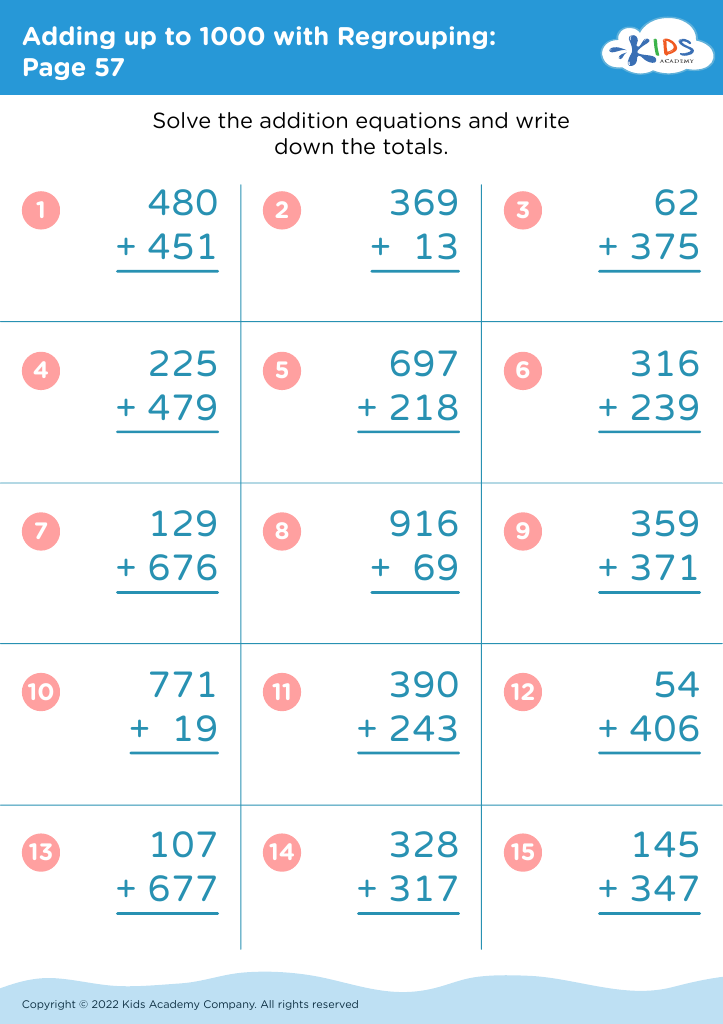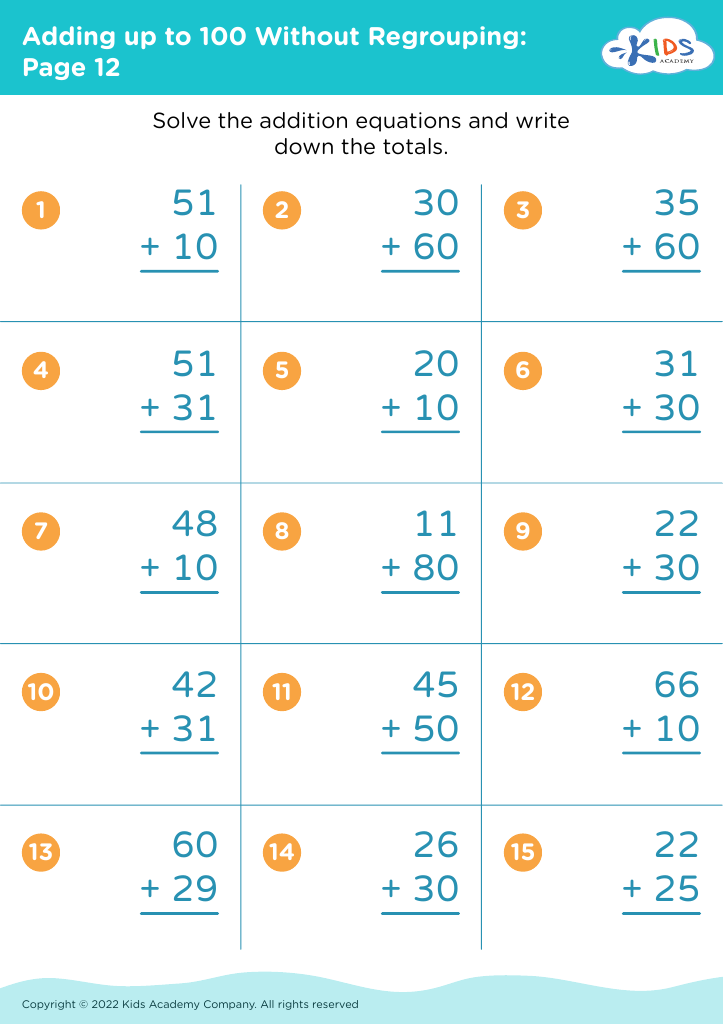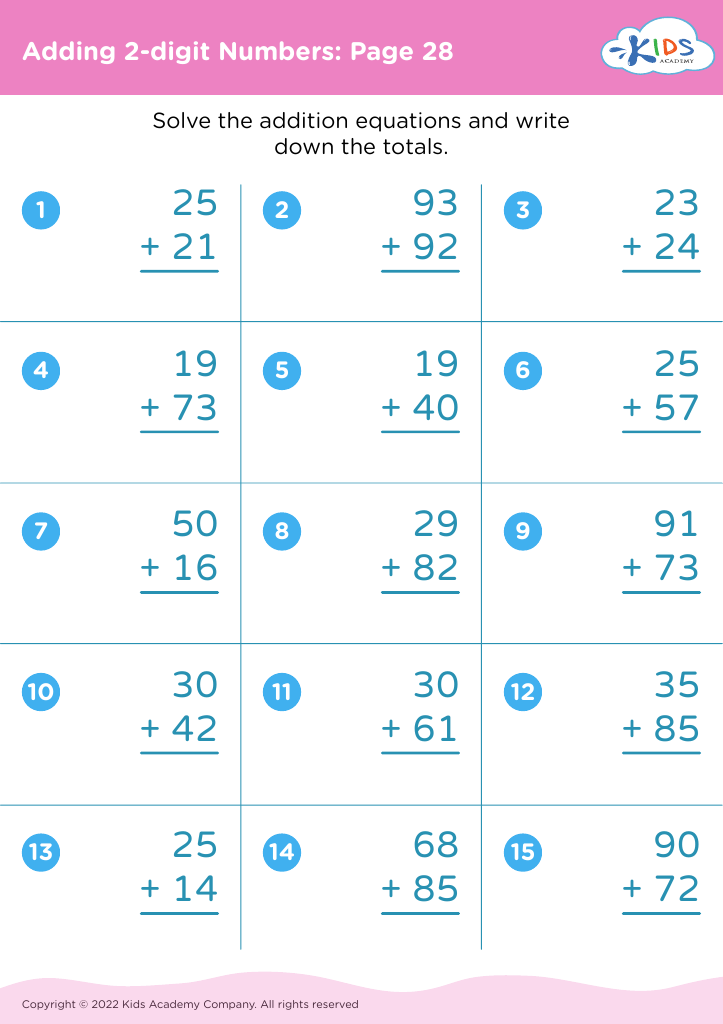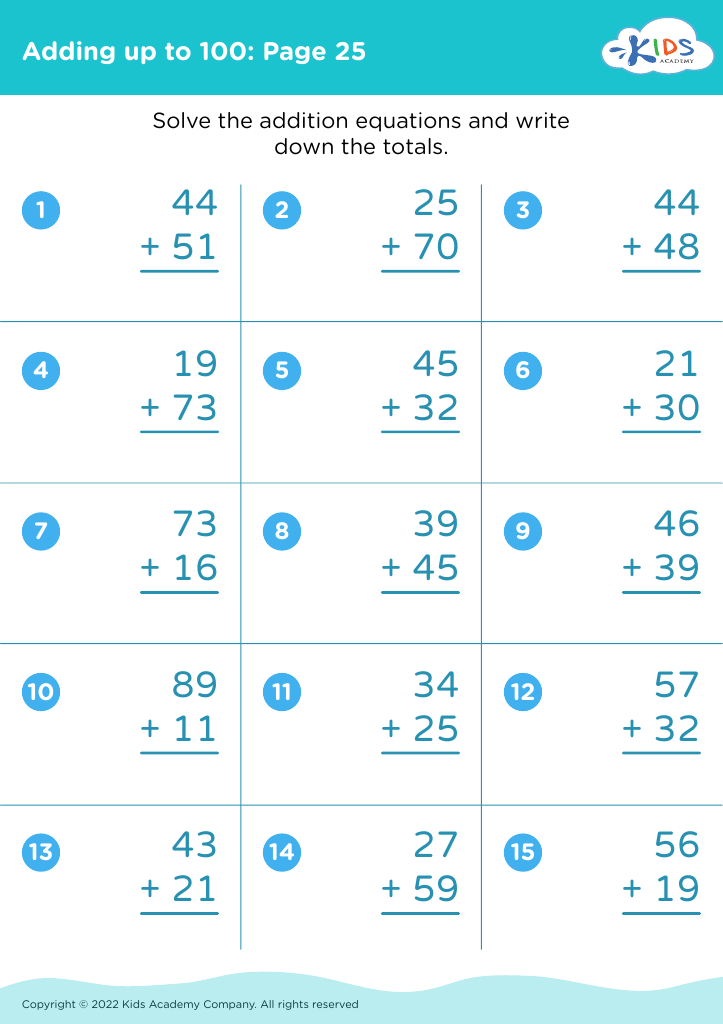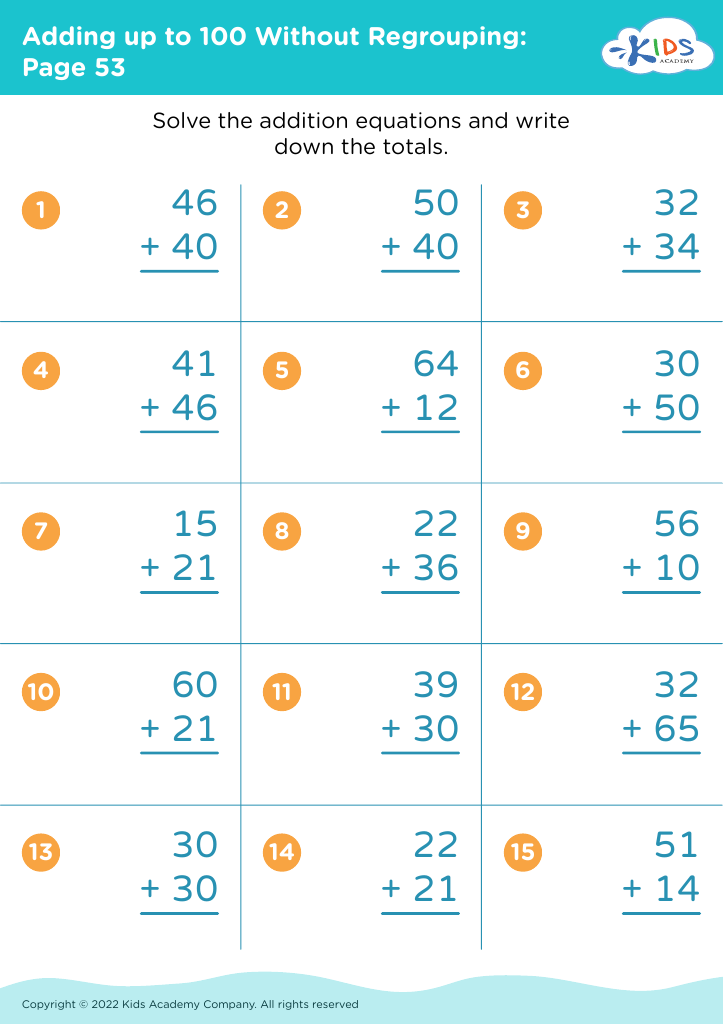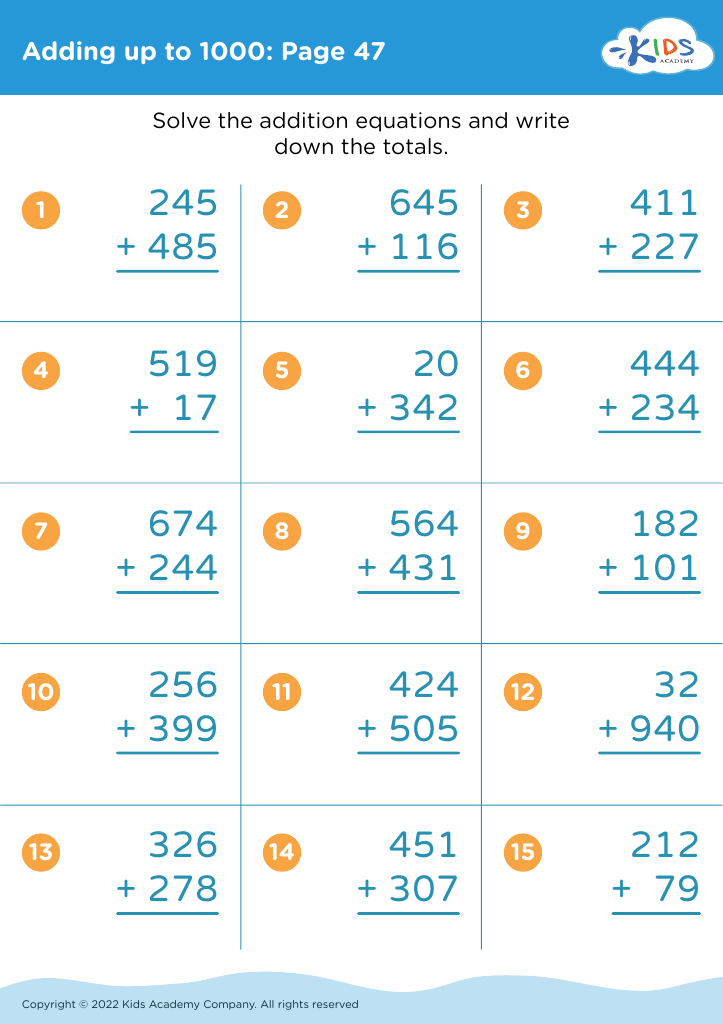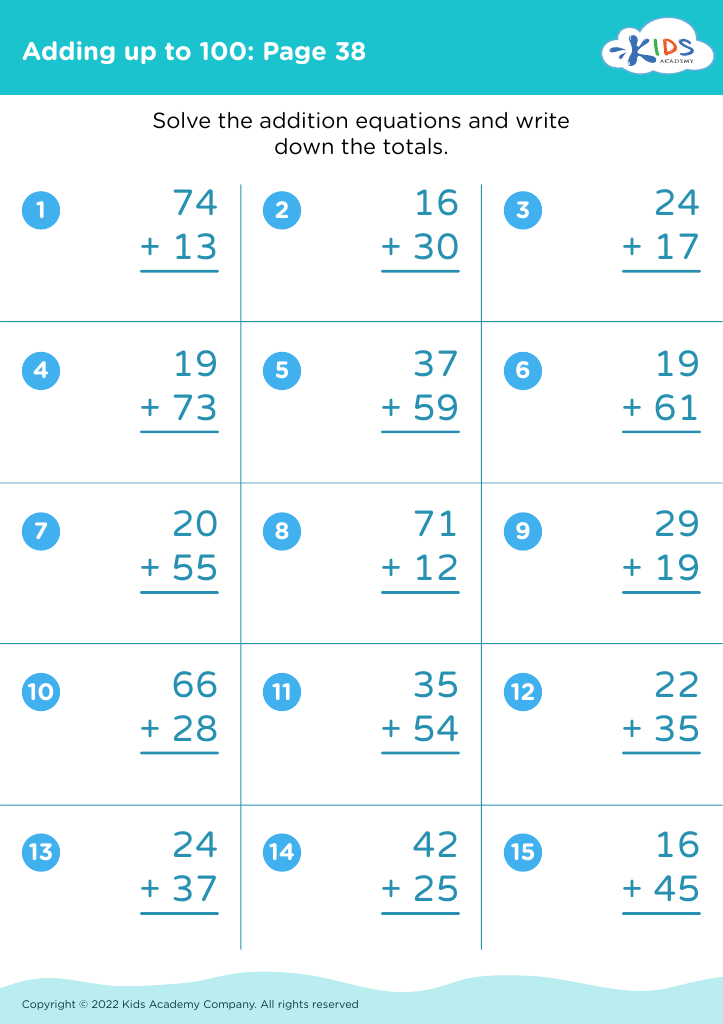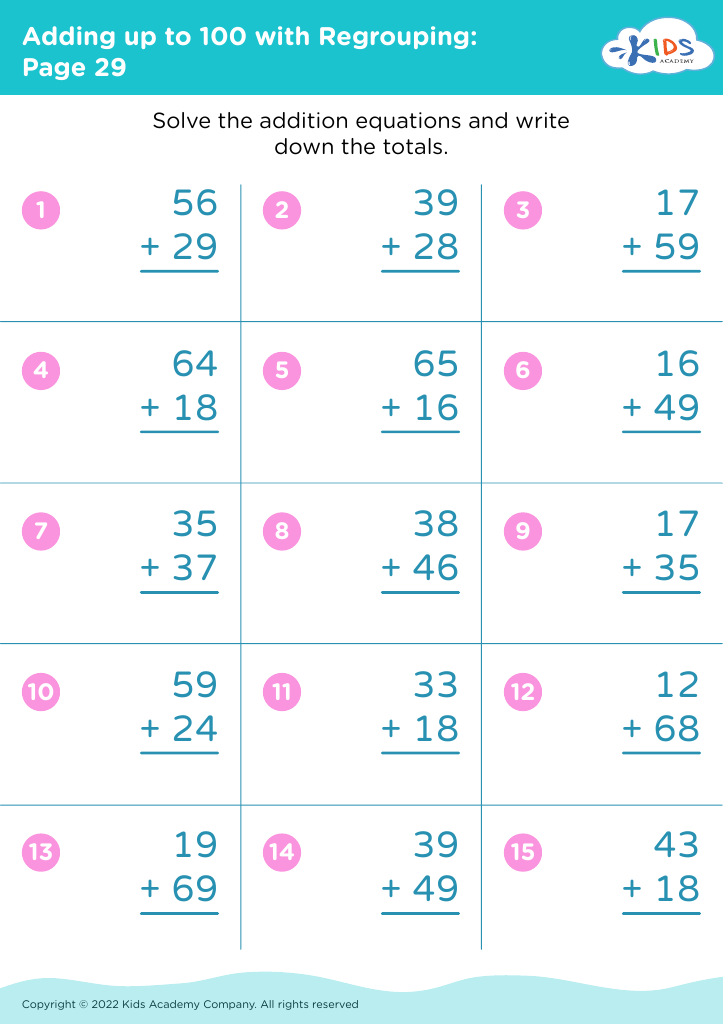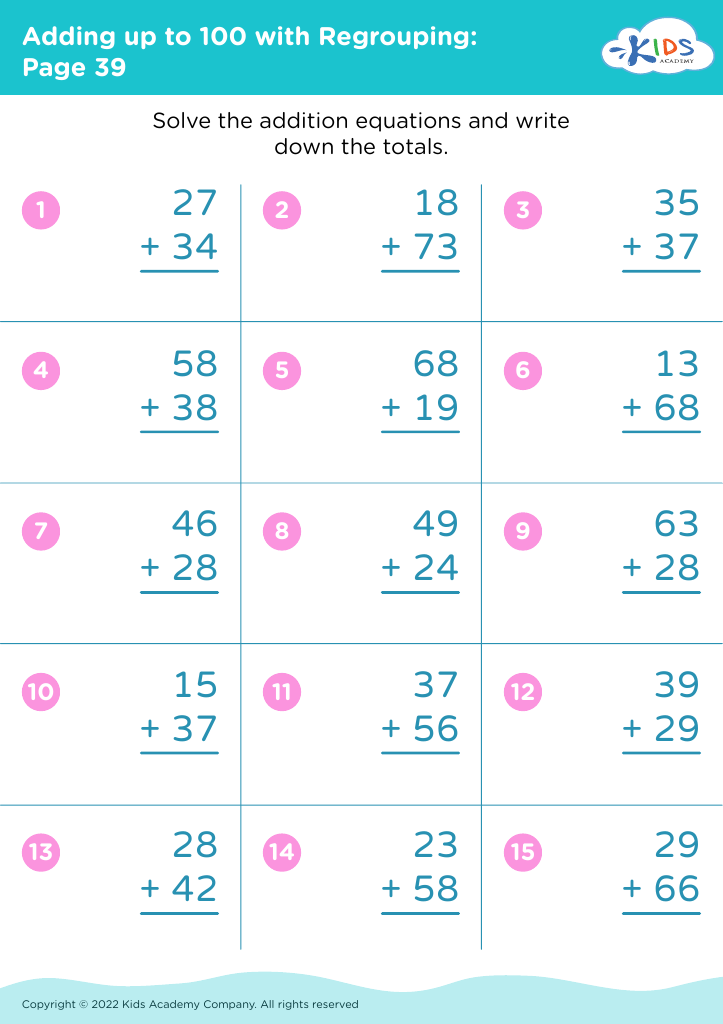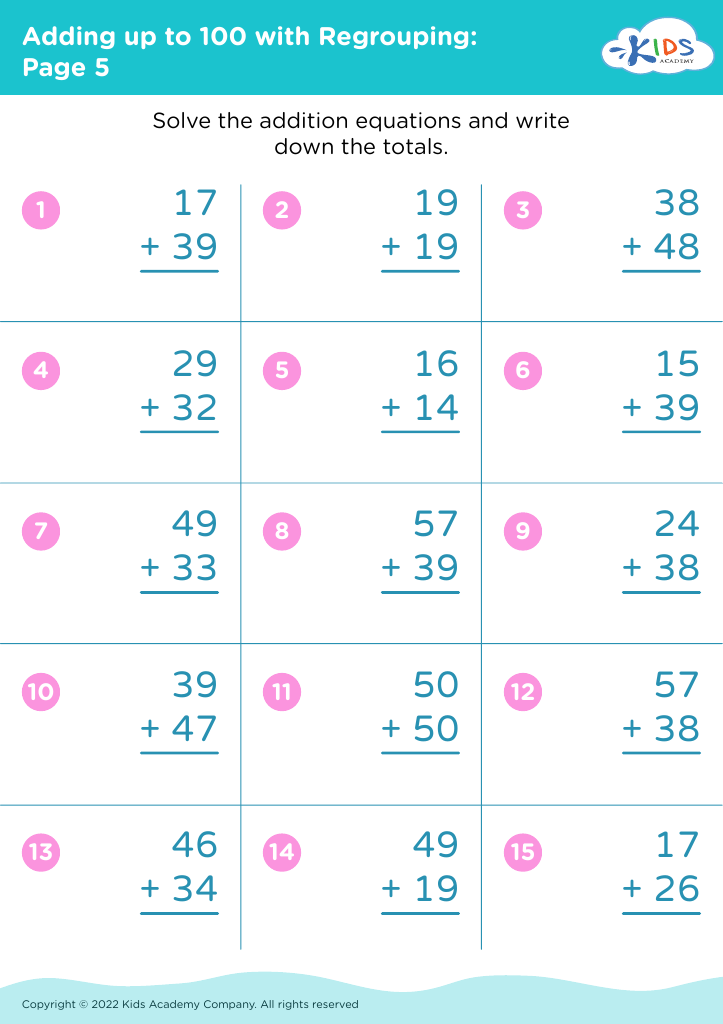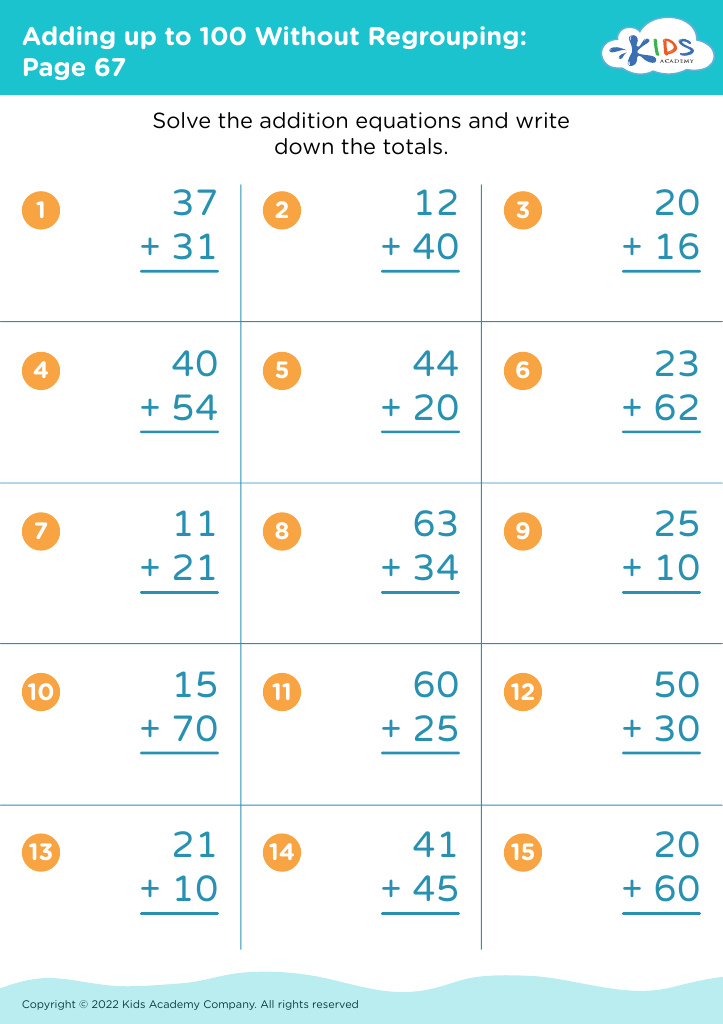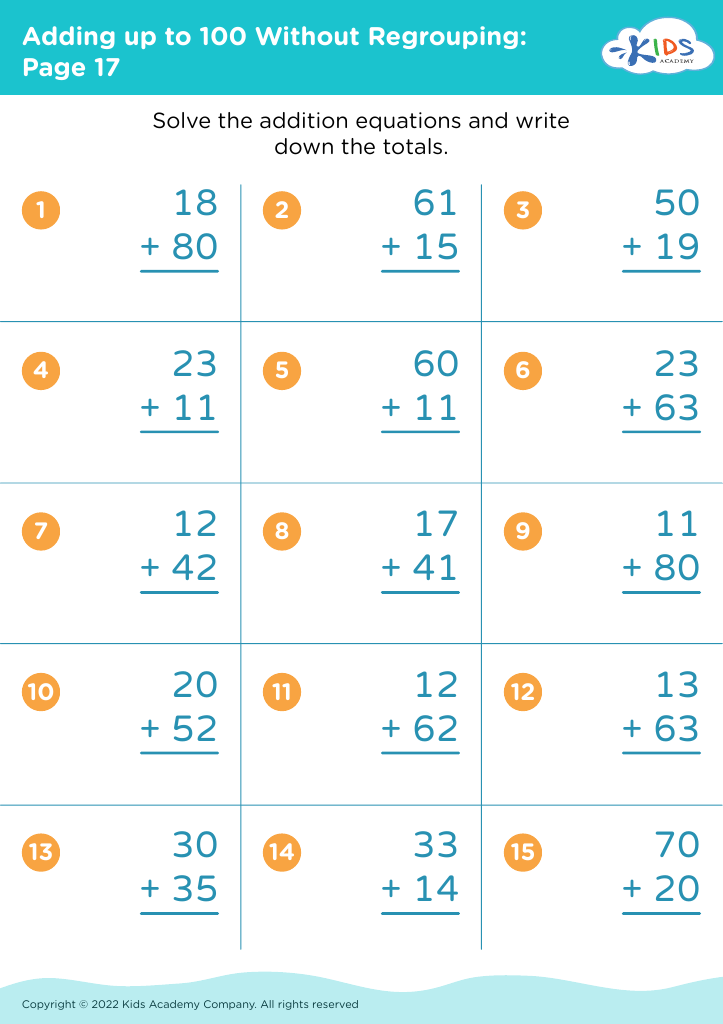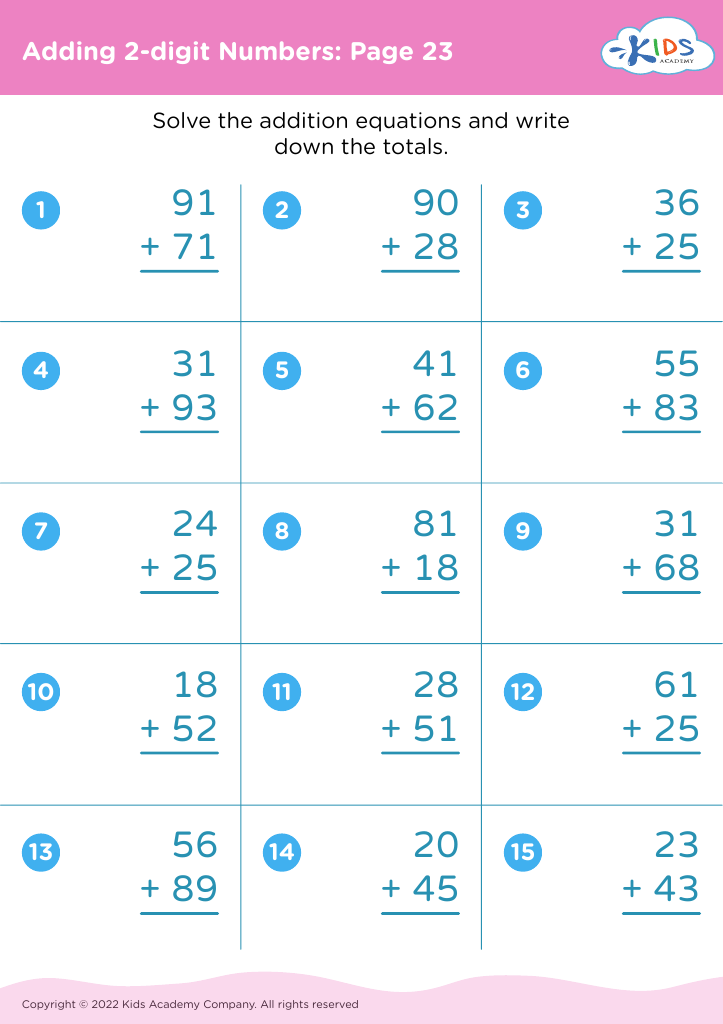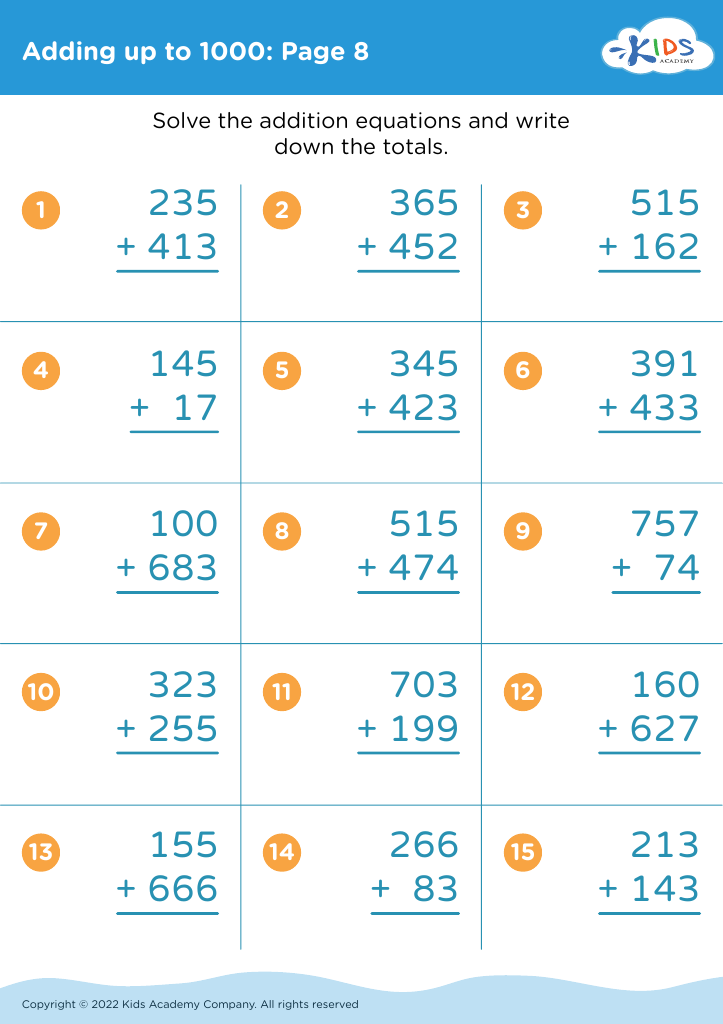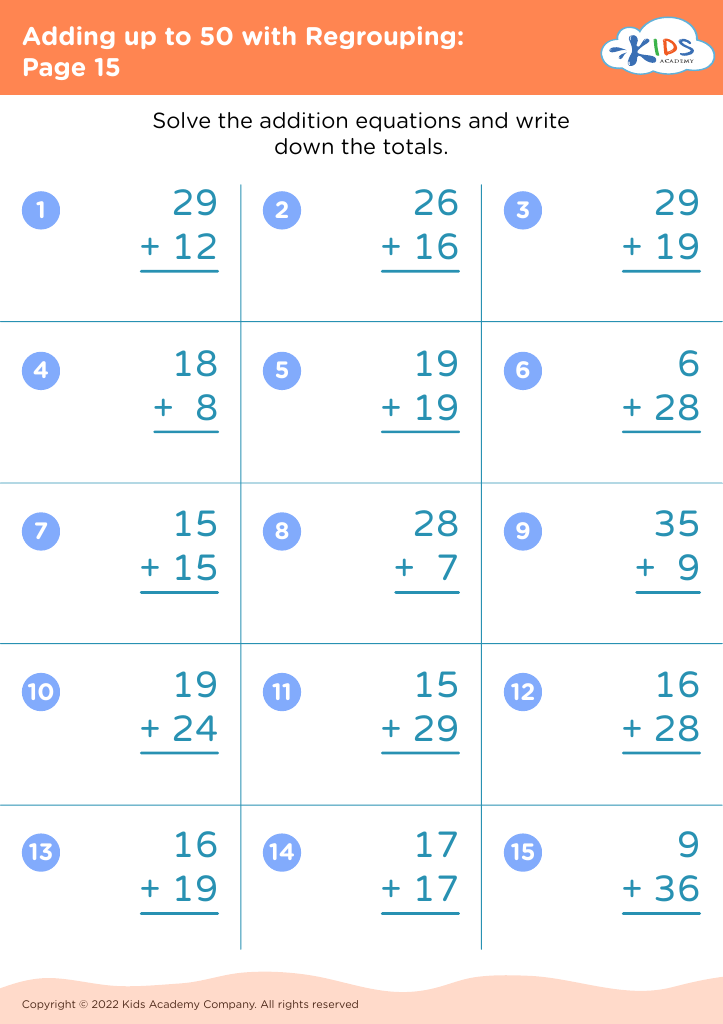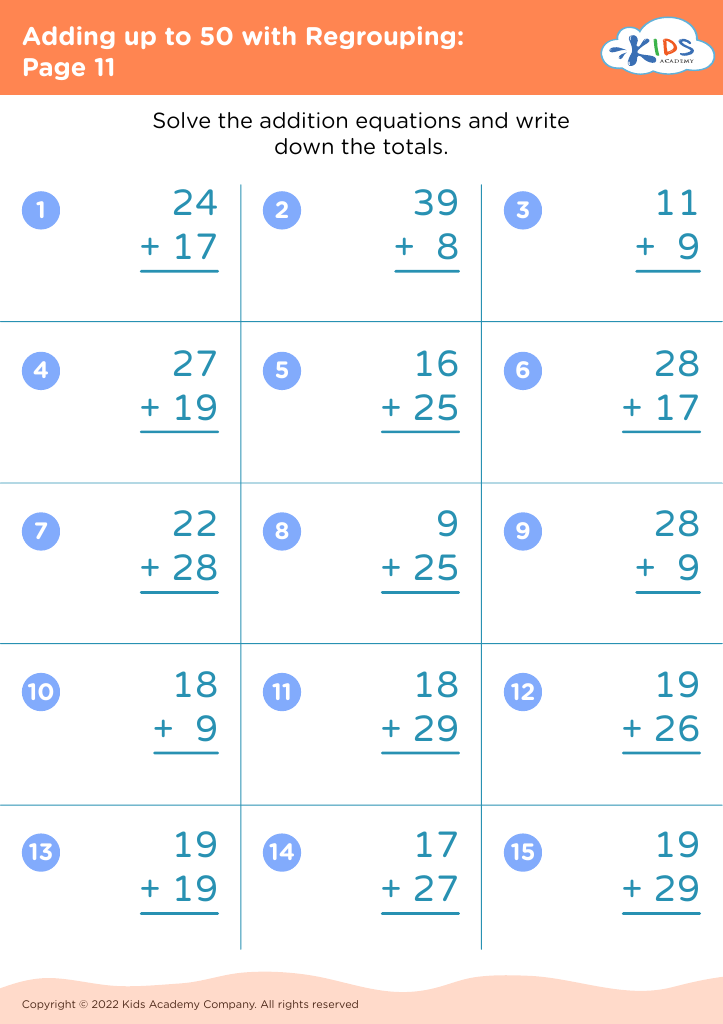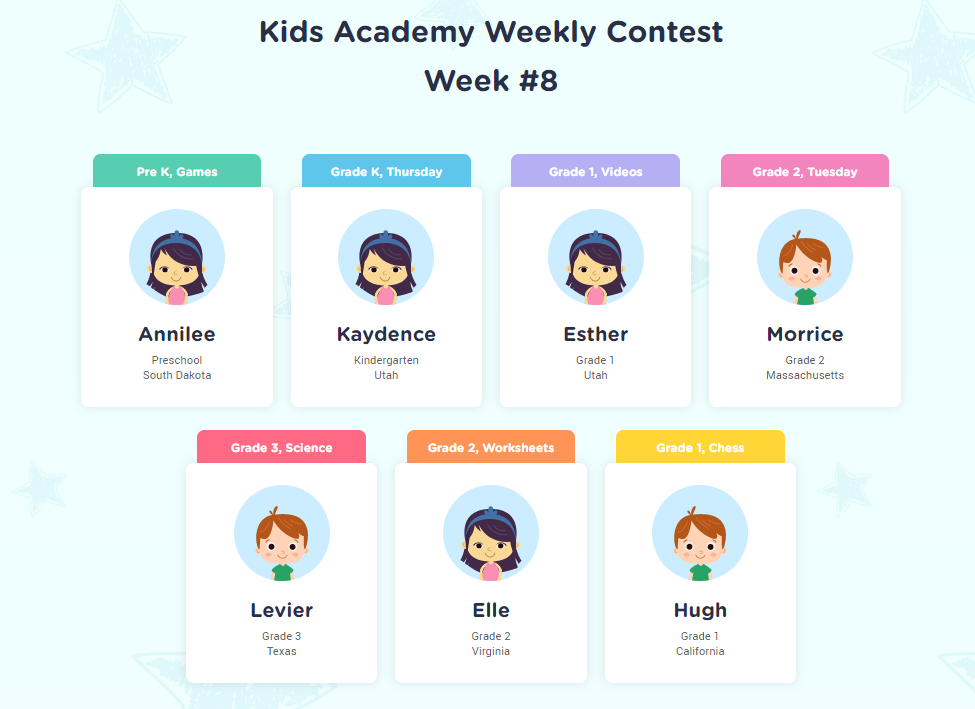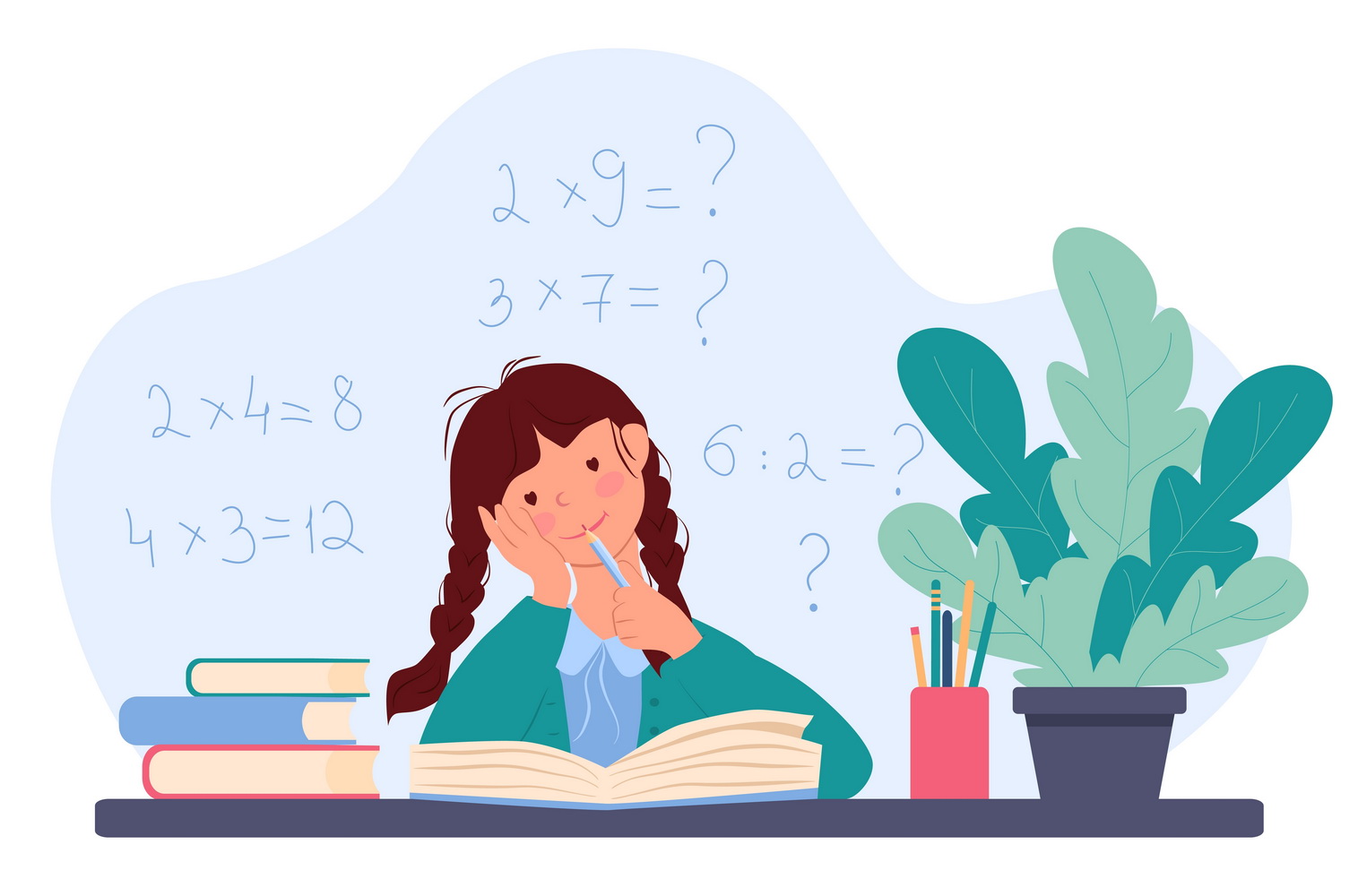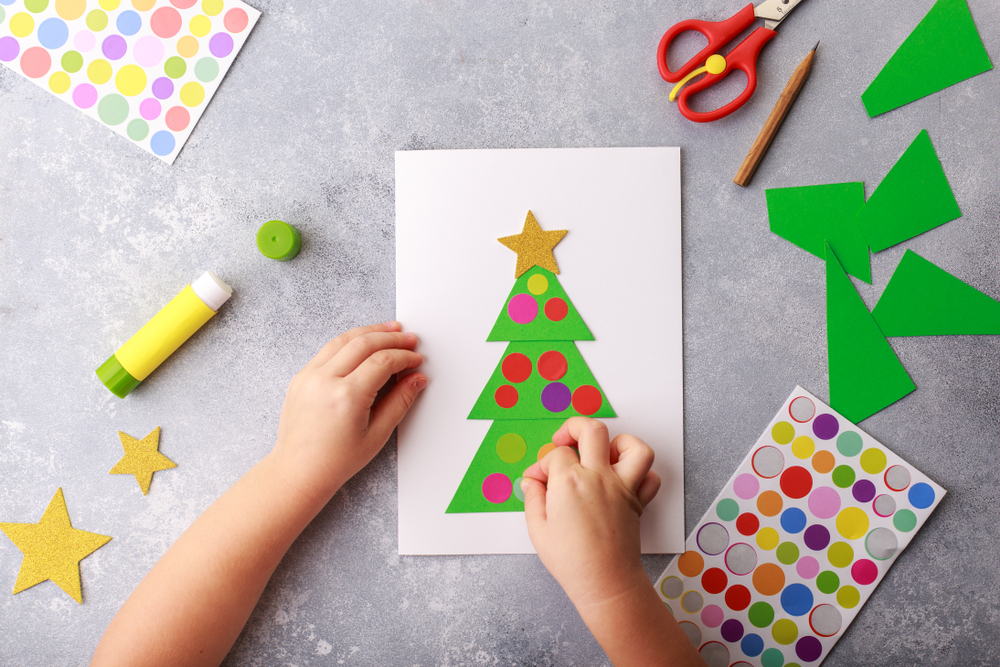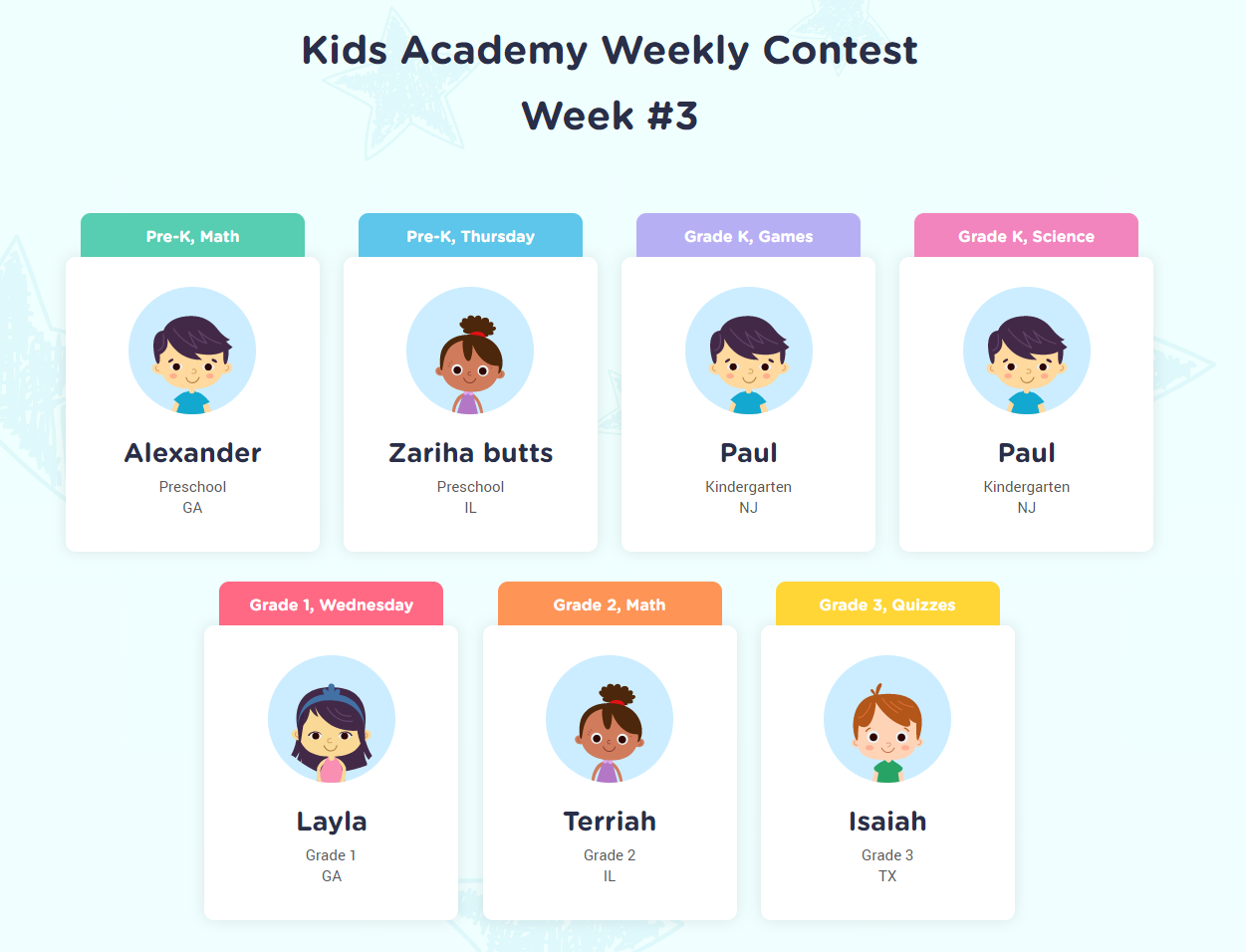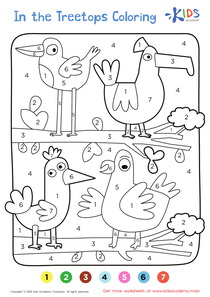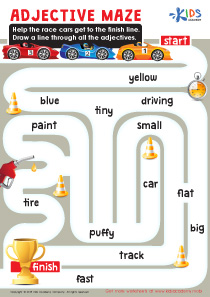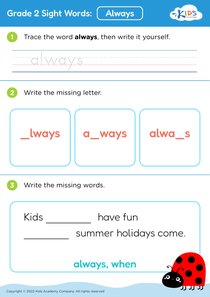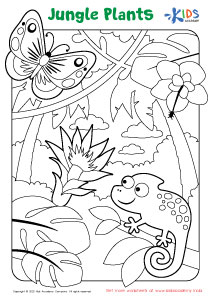Counting skills Grade 2 Worksheets
153 filtered results
-
From - To
Enhance your second grader's math abilities with our Counting Skills Grade 2 Worksheets! These expertly designed activities focus on strengthening essential counting skills, such as skip counting by 2s, 5s, and 10s, counting backwards, and recognizing number patterns. Our engaging, colorful printable worksheets make learning fun and interactive, helping children build a solid foundation in math through hands-on practice. Perfect for classroom use or at-home learning, these worksheets will boost your child’s confidence and proficiency in math. Download now to support your child’s educational journey with quality resources from Kid’s Academy!
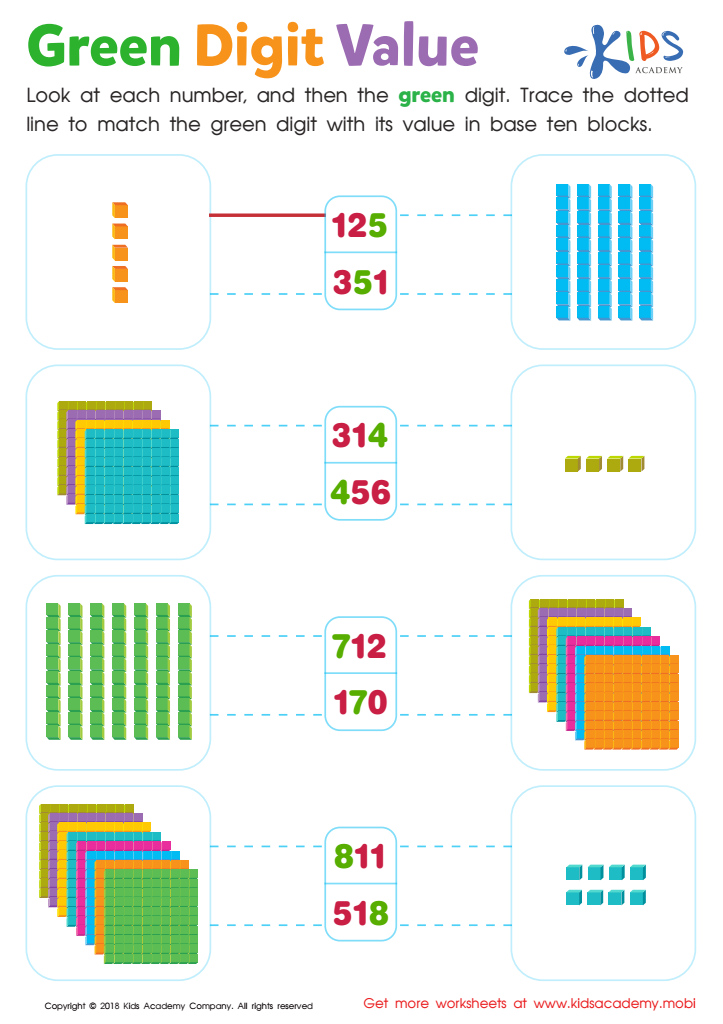

Green Digit Value Worksheet
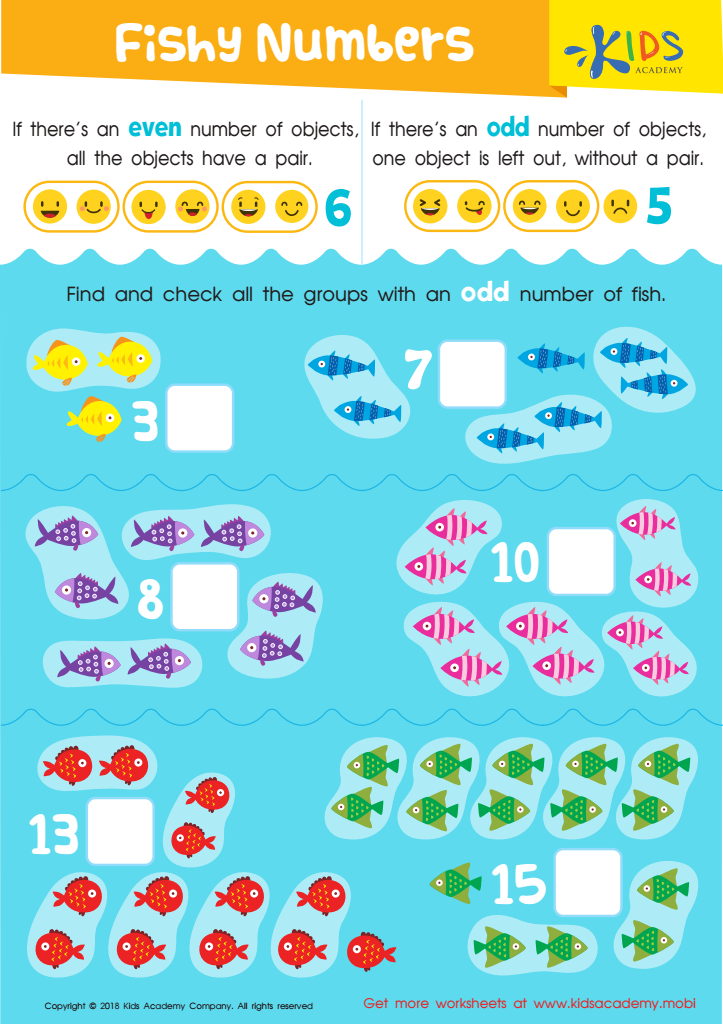

Fishy Numbers Worksheet
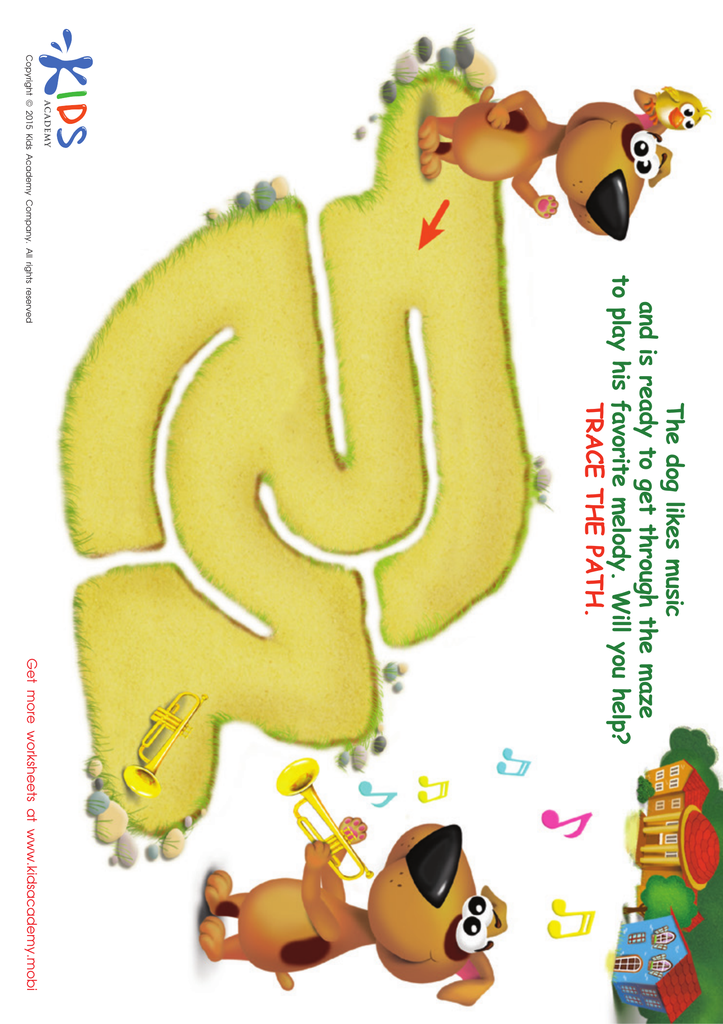

Trumpeter Maze Worksheet
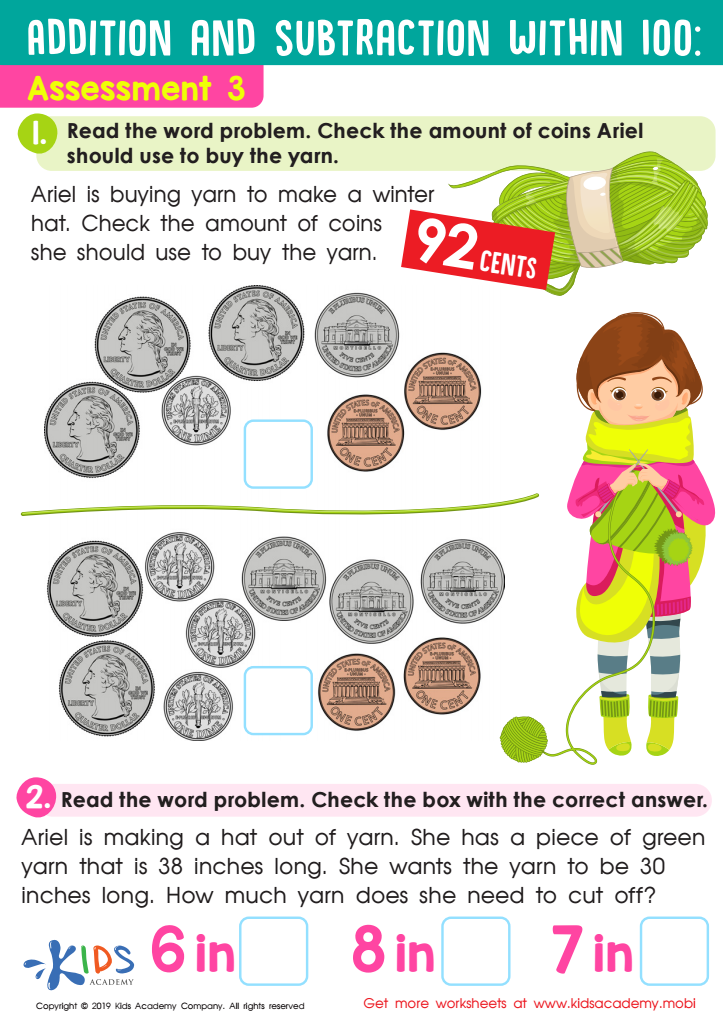

Assessment 3 Math Worksheet
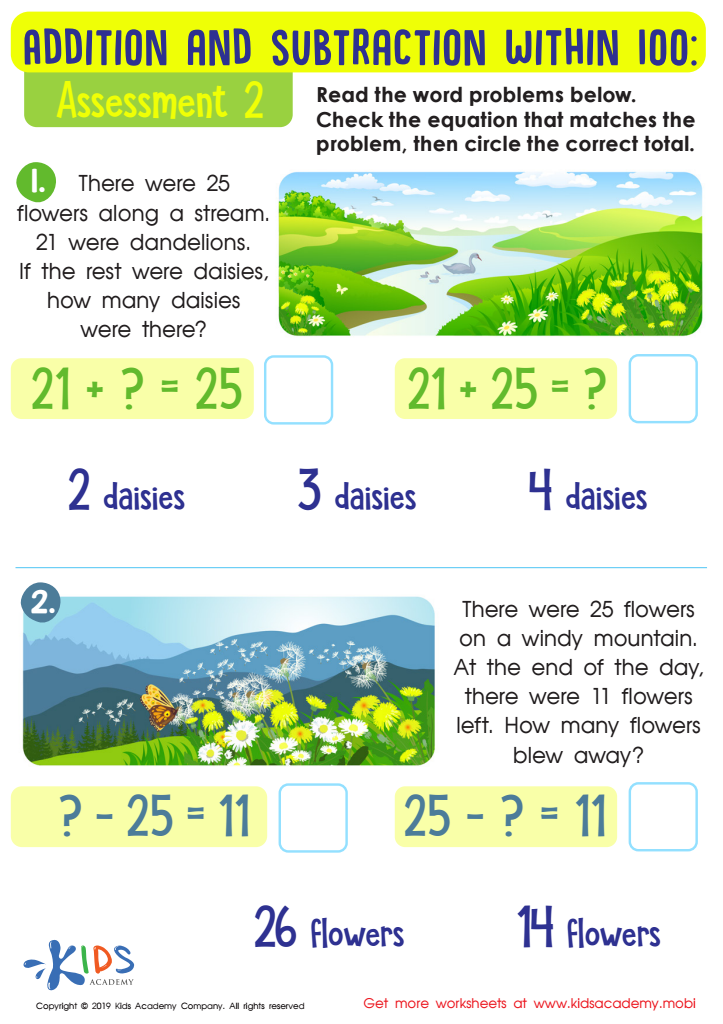

Assessment 2 Math Worksheet
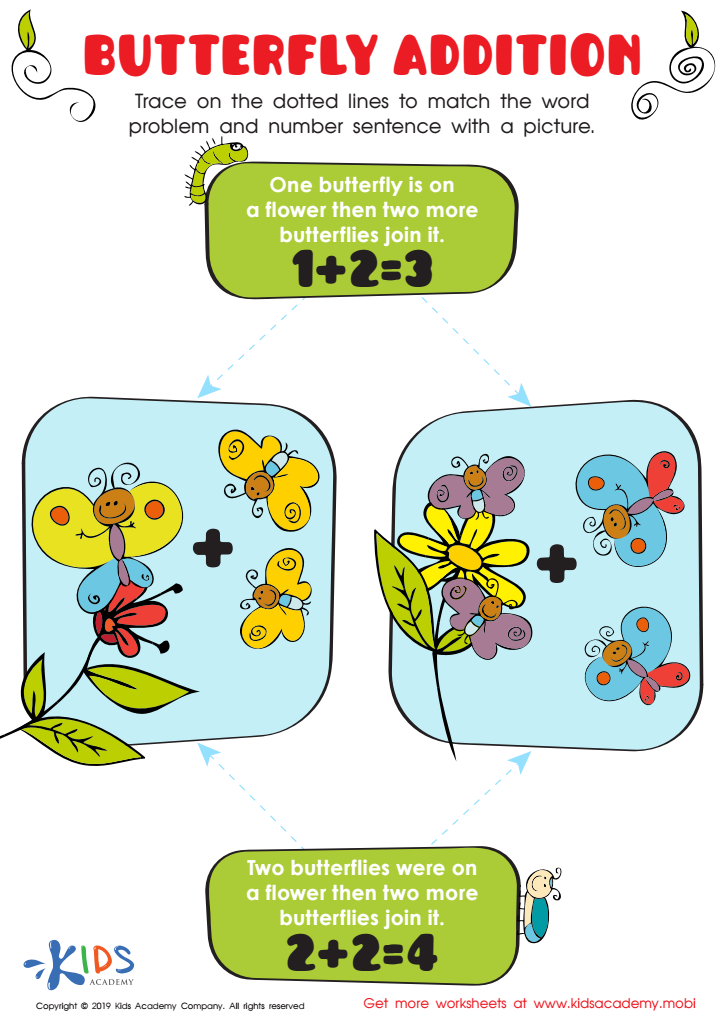

Butterfly Addition Worksheet
Counting skills in Grade 2 are foundational to a child’s mathematical development and broader academic success. At this stage, children learn not only to count but to understand the broader concepts of number sense, which include recognizing number patterns, understanding place value, and performing basic arithmetic operations.
Proficiency in counting provides the building blocks for more complex mathematical concepts. It helps children develop computational skills needed for addition, subtraction, multiplication, and division. These fundamental skills facilitate problem-solving and critical thinking, which are essential for success in a wide range of subjects beyond mathematics.
Moreover, mastering counting in early grades boosts a child’s confidence and fosters a positive attitude towards learning. When counting becomes second nature, children are more likely to engage with and enjoy math, which can influence their performance in later years.
For parents and teachers, focusing on counting skills also allows for early identification of potential learning challenges. By recognizing and addressing difficulties early on, they can provide the necessary support and interventions to ensure that all children have a strong mathematical foundation.
In summary, counting skills in Grade 2 are crucial because they underpin future learning, build academic confidence, and enable early detection of learning obstacles, setting the stage for continued educational success.
 Assign to My Students
Assign to My Students

